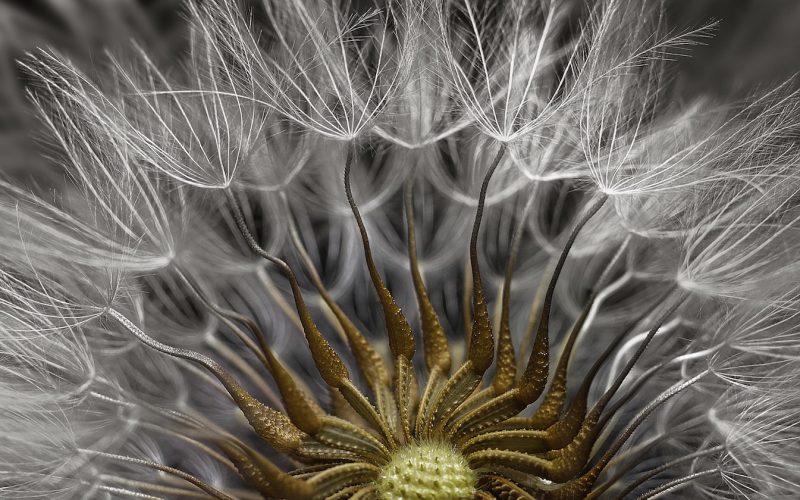Nikon Small World Photomicrography 2017 Winners

Nature photography is often about the huge sweeping vistas, hulking megafauna and stretching flora. But for the winners of Nikon Small World Photomicrography Competition – the devilish beauty is definitely in the detail. To celebrate their 100th Anniversary, Nikon Instruments Inc. reveal the microscopic wonders of their 43rd annual competition, guaranteed to make you gaze in miniature awe.
Selected from more than 2,000 entries from 88 countries, Nikon Small World recognised over 85 photos with the much contested first, second and third top spots. The images are an assortment of unseen and unimaginable: from the gruesome head of a tapeworm, to the fetus of a fruitbat – these images come from professionals and hobbyists alike.


Communications Manager of Nikon Instruments, Eric Flem, said, “This year’s winners not only reflect remarkable research and trends in science, but they also allow the public to get a glimpse of a hidden world,” – and he isn’t wrong.
The top spot for this year’s competition went to Dr. Bram van den Broek of The Netherlands Cancer Institute (NKI) for his image of a skin cell expressing a large amount of keratin. Keratin is a hugely important protein in skin cells, and whilst the blue and gold hues of this gorgeous image are unforgettable, the research of Dr. van den Broek and his team is essential to understanding cancer and other diseases.
“What I most enjoy about this competition is that a larger audience can appreciate the beautiful complexity and diversity of the world unseen by the naked eye,” remarked van den Broek.
Check out the top 20 winners of this year’s competition below:
1st Place – Dr. Bram van den Broek, Andriy Volkov, Dr. Kees Jalink, Dr. Nicole Schwarz & Dr. Reinhard Windoffer
The Netherlands Cancer Institute, BioImaging Facility & Department of Cell Biology
Amsterdam, The Netherlands
Immortalized human skin cells (HaCaT keratinocytes) expressing fluorescently tagged keratin.
Confocal
40x (objective lens magnification)
2nd Place – Dr. Havi Sarfaty Eyecare Clinic
Yahud-Monoson, Israel
Senecio vulgaris (a flowering plant) seed head
Stereomicroscopy
2x
3rd Place – Jean-Marc Babalian
Nantes, France
Living Volvox algae releasing its daughter colonies
Differential Interference Contrast
100x
4th Place – Teresa Zgoda
Rochester Institute of Technology
Rochester, New York, USA
Taenia solium (tapeworm) everted scolex
200x
5th Place – Dean Lerman
Netanya, Israel
Mold on a tomato
Reflected Light, Focus Stacking
3.9x
6th Place – Dr. David A. Johnston
University of Southampton/University Hospital Southampton, Biomedical Imaging Unit
Southampton, United Kingdom
Lily pollen
Confocal
63x (objective lens magnification)
7th Place – Dr. Ryo Egawa
Nagoya University, Graduate School of Medicine
Nagoya, Japan
Individually labeled axons in an embryonic chick ciliary ganglion
Differential Interference Contrast
Confocal, Tissue Clearing, Brainbow (labeling technique)
30x (objective lens magnification)
8th Place – Dr. Michael Perny
University of Bern, Institute for Infectious Diseases
Bern, Switzerland
Newborn rat cochlea with sensory hair cells (green) and spiral ganglion neurons (red)
Confocal
100x
9th Place – Catarina Moura, Dr. Sumeet Mahajan, Dr. Richard Oreffo & Dr. Rahul Tare
University of Southampton, Institute for Life Sciences
Southampton, United Kingdom
Growing cartilage-like tissue in the lab using bone stem cells (collagen fibers in green and fat deposits in red)
Second Harmonic Generation (SHG) and Coherent Anti-Stokes Raman Scattering (CARS)
20x for collagen; 40x for fat deposits
10th Place – Dr. Csaba Pintér
University of Pannonia, Georgikon Faculty, Department of Plant Protection
Keszthely, Hungary
Phyllobius roboretanus (weevil)
Stereomicroscopy
80x
11th Place – Steven Simon
Simon Photography
Grand Prairie, Texas, USA
Plastic fracturing on credit card hologram
10x (objective lens magnification)
12th Place – Charles Krebs
Charles Krebs Photography
Issaquah, Washington, USA
Opiliones (daddy longlegs) eye
Reflected Light, Image Stacking
20x (objective lens magnification)
13th Place – Levon Biss
Levon Biss Photography Ltd
Ramsbury, United Kingdom
Exaerete frontalis (orchid cuckoo bee) from the collections of the Oxford University Museum of Natural History
Reflected Light
10x (objective lens magnification)
14th Place – David Millard
Austin, Texas, USA
Common Mestra butterfly (Mestra amymone) eggs, laid on a leaf of Tragia sp. (Noseburn plant)
Incident Illumination, Image Stacking
7.5x (objective lens magnification)
15th Place – Dr. Rick Adams
University of Northern Colorado, Department of Biological Sciences
Greeley, Colorado, USA
3rd trimester fetus of Megachiroptera (fruit bat)
Darkfield, Stereomicroscopy
18x
16th Place – Marek Miś
Marek Miś Photography
Suwalki, Poland
Parus major (titmouse) down feather
Polarized Light, Darkfield
25x
17th Place – Harald K. Andersen
Steinberg, Norway
Dyed human hair
Darkfield
40x
18th Place – Christian Gautier
Biosphoto
Le Mans, France
Synapta (sea-cucumber) skin
Polarized Light
100x
19th Place – Dr. Dylan Burnette
Vanderbilt University School of Medicine, Department of Cell and Developmental Biology
Nashville, Tennessee, USA
Embryonic body wall from a developing Mus musculus (mouse)
100x (objective lens magnification)
20th Place – Tracy Scott
Ithaca, New York, USA
Aspergillus flavus (fungus) and yeast colony from soil
Transmitted Light
40x
If you loved these magnified marvels as much as us, then have a look at the competition’s website, Facebook, Twitter and Instagram for more!

























